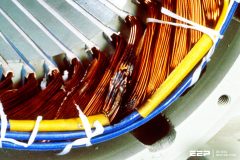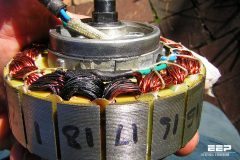Geothermal Resources
Understanding geothermal energy begins with an understanding of the source of this energy – the earth’s internal heat. The Earth’s temperature increases with depth, with the temperature at the center reaching more than 4200 °C (7600 °F).
A portion of this heat is a relic of the planet’s formation about 4.5 billion years ago, and a portion is generated by the continuing decay of radioactive isotopes. Heat naturally moves from hotter to cooler regions, so Earth’s heat flows from its interior toward the surface.
Because the geologic processes known as plate tectonics, the Earth’s crust has been broken into 12 huge plates that move apart or push together at a rate of millimeters per year. Where two plates collide, one plate can thrust below the other, producing extraordinary phenomena such as ocean trenches or strong earthquakes. At great depth, just above the down going plate, temperatures become high enough to melt rock, forming magma.
Because magma is less dense than surrounding rocks, it moves up toward the earth’s crust and carries heat from below. Sometimes magma rises to the surface through thin or fractured crust as lava.
However, most magma remains below earth’s crust and heats the surrounding rocks and subterranean water. Some of this water comes all the way up to the surface through fault sand cracks in the earth as hot springs or geysers
These reservoirs are sources of geothermal energy that can potentially be tapped for electricity generation or direct use.
Resource Identification
Geological, hydro-geological, geophysical, and geochemical techniques are used to identify and quantify geothermal resources. Geological and hydro-geological studies involve mapping any hot springs or other surface thermal features and the identification of favorable geological structures. These studies are used to recommend where production wells can be drilled with the highest probability of tapping into the geothermal resource.
Geophysical surveys are implemented to figure the shape, size, depth and other important characteristics of the deep geological structures by using the following parameters: temperature (thermal survey), electrical conductivity (electrical and electromagnetic methods), propagation velocity of elastic waves (seismic survey), density (gravity survey), and magnetic susceptibility (magnetic survey).
Geochemical surveys (including isotope geochemistry) are a useful means of determining whether the geothermal system is water or vapor-dominated, of estimating the minimum temperature expected at depth, of estimating the homogeneity of the water supply and, of determining the source of recharge water.
Geothermal exploration addresses at least nine objectives:
- Identification of geothermal phenomena
- Ascertaining that a useful geothermal production field exists
- Estimation of the size of the resource
- Classification of the geothermal field
- Location of productive zones
- Determination of the heat content of the fluids that will be discharged by the wells in the geothermal field
- Compilation of a body of data against which the results of future monitoring can be viewed
- Assessment of the pre-exploitation values of environmentally sensitive parameters
- Determination of any characteristics that might cause problems during field development
Drilling
Once potential geothermal resources have been identified, exploratory drilling is carriedout to further quantify the resource. Because of the high temperature and corrosive nature of geothermal fluids, as well as the hard and abrasive nature of reservoir rocks found in geothermal environments, geothermal drilling is much more difficult and expensive than conventional petroleum drilling. Each geothermal well costs $1–4 million to drill, and age othermal field may consist of 10–100 wells.
Drilling can account for 30–50% of a geothermal project’s total cost.
Typically, geothermal wells are drilled to depths ranging from 200 to 1,500 meters depth for low and medium temperature systems, and from 700 to 3,000 meters depth for high-temperature systems. Wells can be drilled vertically or at an angle. Wells are drilled in a series of stages, with each stage being of smaller diameter than the previous stage, and each being secured by steel casings, which are cemented in place before drilling the subsequent stage.
The final production sections of the well use an uncemented perforated liner, allowing the geothermal fluid to pass into the pipe.
The objectives of this phase are to prove the existence of an exploitable resource and to delineate the extent and the characteristics of the resource. An exploratory drilling program may include shallow temperature-gradient wells, “slim-hole” exploration wells, and production-sized exploration/production wells.
Temperature-gradient wells are often drilled from 2–200 meters in depth with diameters of 50–150 mm.
Slim-hole exploration wells are usually drilled from 200 to 3000 meters in depth with bottom-hole diameters of 100 to 220 mm. The size and objective of the development will determine the number and type of wells to be included in exploratory drilling programs.










